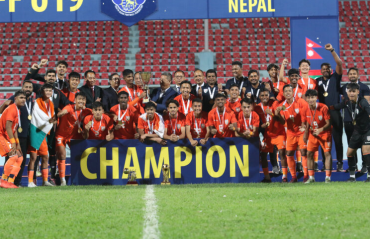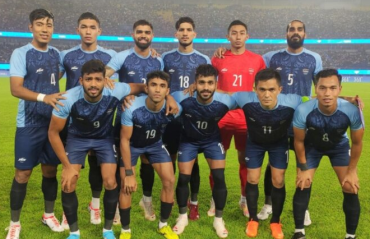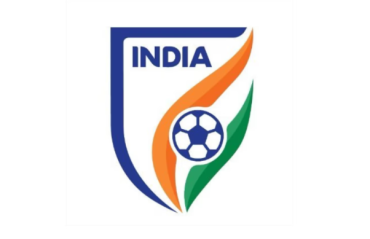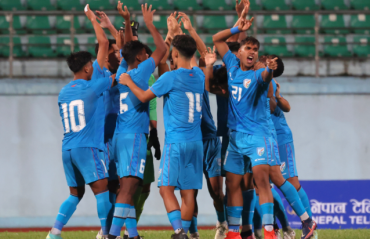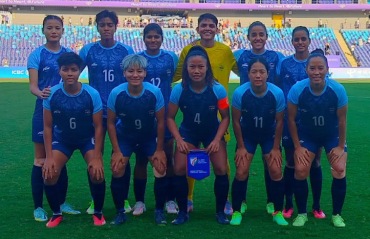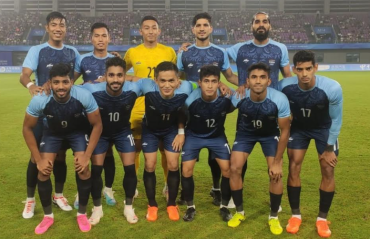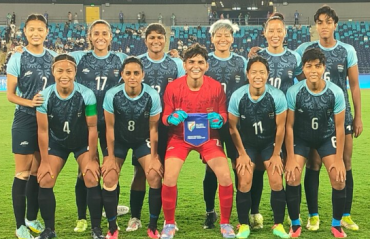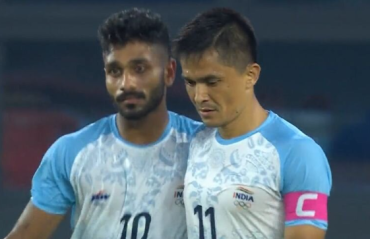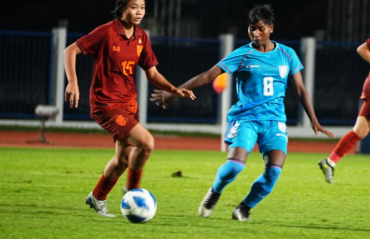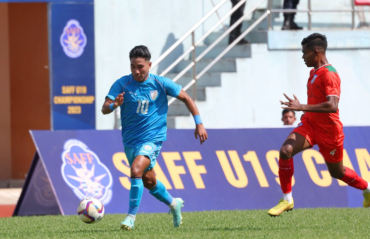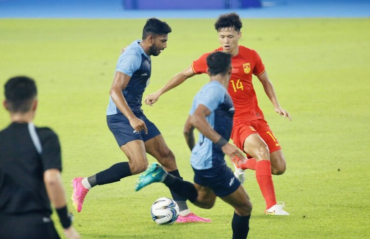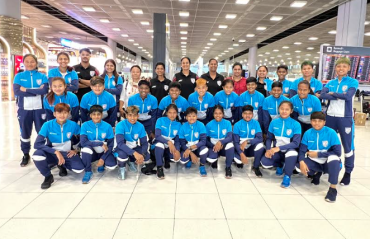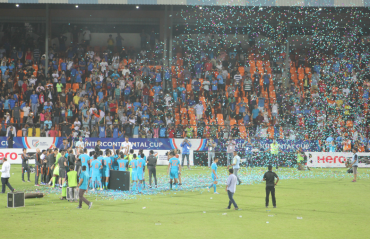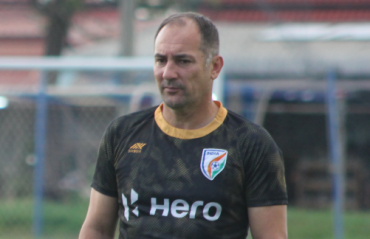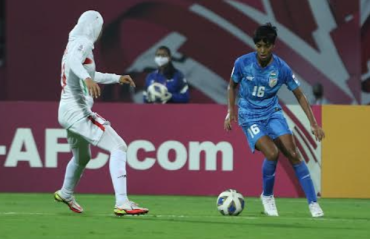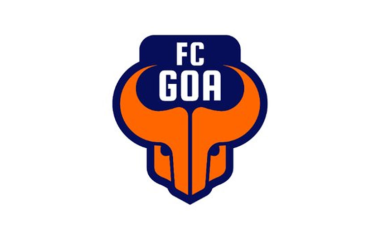SUNBURNT TERRACE - 'A Review of Structure': the good, the bad, the ugly & the aftershocks
- By Chiranjit Ojha

- April 21, 2016

WE'VE HEARD IT COMING for a while now. People talked here and there, from lower-ranked AIFF officials to Vice President Subrata Dutta. And while AIFF General Secretary Kushal Das was previously trying to keep a tight lip - and lid - on the blueprint of the merger between I-League and ISL, he too spoke out yesterday, announcing its impending arrival.
We knew it was coming in 2017-18, and Das confirmed it; he said we'll have One League at worst by 2018. We knew it was going to be ISL taking the 3 most competent clubs from I-League and most probably leaving others in a newly-formed second division. We knew it wasn't as much of a merger as ISL taking the best bits out of I-League.
What was interesting was the way he framed the whole operation. He didn't want to call it a "merger", which echoed the sentiments of IMG-Reliance and other stakeholders of the ISL brand who do not want it associated with a "lesser" brand like I-League. The term Das chose for the unification - or rather, the cannonization of ISL - was a "review of Indian club football structure."
Describing it like this rings true in a lot of ways. Before ISL came along, there were a handful of clubs in Indian football who commanded much more monetary power or popular appeal than the rest; namely the Kolkata clubs and Bengaluru FC who joined them later on. Now with the ISL we have a new flock of franchises - who will become actual football clubs by the time the merger (we'll keep using that term in this article for ease of reference) happens - that are comparable to the above three in those terms. So it makes sense for these clubs to band together and form a top division that compliments their strengths. Something similar led to the introduction of the Premier League in England.
Also, the merger will see ISL go through a lot of re-structuring of its own. They will follow the AFC rule of having a maximum of 4 foreigners in the squad, the clubs will fulfil the AFC A-licensing criteria. Over the past few months we have already seen them making movements towards this: getting rid off the gimmicky player-manager thing, the players' draft and auction to adopt standard practices in world football like hiring coaches with qualification and buying players from the open market. The ISL management have also imposed a rule requiring a franchise to have a minimum 1-year contract with at least 8 of their Indian players to prime them up for a time when they will be active throughout the season rather than just 2 months.
We have also seen Delhi Dynamos and Mumbai City take steps towards building their football schools and academies. Atletico de Kolkata and FC Goa are also expected to follow suit. Once all these things are set in motion, the ISL franchises will no longer be the wayward temporary entities posing as football clubs they have been till now. And all this is definitely good news for Indian football.
But on the other hand, this "re-structuring" of club football in India will see a lot of I-League clubs - most of them, in fact - get reduced to the status of a second division club under the new system. Under the new criteria which sets a high financial bar for the clubs to get into the new top division i.e. ISL, and there may be a one-club-per-city policy in force for the first few seasons, with Kolkata being exempt of course. While most clubs in I-League cannot spend enough to make it to the elite club and therefore automatically fall into the second division bracket. But there are anomalies.
Pune based DSK Shivajians entered the I-League with a long haul in mind. They have deep pockets, a vibrant academy, all the facilities a top division football club needs, and they are also planning to construct their own stadium. Now, to justify that scale of investment in the sport, their club has to be in the top division; which is why they entered I-League as a corporate franchise. But now if the rules of the new top division league say that only one team from Pune can be in the ISL, will they be allowed to do so over ISL's own FC Pune City?
The Shivajians have been around for a long time and have made way more contributions to Indian football through their academy and grassroot programs than Pune City. And they can spend an equal amount of money. Will the new ISL, then, allow DSK Shivajians to be in the new top division? And will Pune City accept the demotion to second division and carry on their duty towards Indian football by playing in the lower league?
It doesn't sound likely. In fact, no ISL franchise is likely to accept anything less than a place under the brightest of limelights. That's the reason they don't want the new league to have any relegation.
So the ISL teams aren't ready to risk any loss for the sake of creating a level playing field in the Indian football landscape, and it's the I-League clubs like Shillong Lajong and Aizawl FC and Sporting Clube de Goa - who fought their way to the top division despite low budgets - that have to be the sacrificial lambs to facilitate the implement this new league system.
Once again, the General Secretary's use of term "review of... structure" is proven to be apt for this situation. Because "re-structuring" is the corporate term many companies use to politely refer to a mass layoff. The irony is ruthless; the I-League clubs engaged in a battle right now to avoid relegation to the lower tier are all destined to be ultimately relegated not by performance but by the institution. How many of them will survive the drop, only time will tell.
There's little doubt that adopting a corporate-minded franchise system in the new league will serve to disenfranchise many of the long-time stakeholders of Indian football. But at this point that is more or less unavoidable. ISL is the most popular football tournament in India and its main proprietors, IMG-Reliance and Star, hold the reigns in the merger. So of course they'll look out for their origninal investors over the football clubs.
But this massive phase-shift in the footballing landscae can give the fans a by-product, another "re-structuring" of sorts, that can have potential long term benefits for Indian football.
East Bengal and Mohun Bagan, two of the I-League clubs who are likely to get a place in the new ISL thanks to their ground-swelling popularity, are still largely following some archaic ways when it comes to managing their operations. Both clubs have a membership system where elections are held to decide who gets to hold major positions, which can be exemplary when done right. But the lack of professionalism and corruption inside the club have caused the players and fans to suffer through a lot of hardship on and off the field.
Neither of the clubs' own grounds have the required facilities to host an I-League match, which has led to a situation where this season they are playing home games at Barasat, Siliguri and even Guwahati just because the Salt Lake Stadium was closed for renovations. Both the clubs' academies are in shambles and junior teams aren't that well looked after. Both clubs have recently been accused of financial wrongdoing and dragged through court: East Bengal for the infamous Saradha chit fun scam and Mohun Bagan for failing to pay a couple of ex players their dues.
On one hand we have allegations of ugly in-fighting and "backstabbing" from some club officials in the East Bengal dressing room, on the other hand Mohun Bagan have been unable to find themselves a main sponsor and have been paying their players and staff through delayed, irregular instalments since last season.
One would hope that being a part of ISL will force these clubs to shed the dated lack of expertise that still holds them back from fully capitalizing on their popularity. Both clubs remain wildly popular and the Kolkata Derby played between them is still attracts one of the largest crowds in world sport. A little bit of professionalism and clever marketing can help them raise enormous amounts of revenue through shirt sales etc; something that should attract bigger sposorship deals towards them once they enter the ISL fold. And facing strong competition from well-organized and deep-pocket opponents, these century-old clubs will finally have to adopt more professional ways. And since these two clubs often serve as examples to the other clubs in the region, this can lead, over time, to a more wholesome and professional environment in the lower leagues as well.
But all this will only happen if AIFF take it upon themselves to look out for the clubs that will lose out due to the merger. Not all of them can be saved, but putting extra emphasis on developing and promoting the new second division league will go a long way. And a promise of future re-introduction of promotion and relegation between the divisions will be crucial as well.
But once again, it will be a long term process. And there will be times when things get messy, testing the nerves of the fans, the stakeholders and of course, the management. AIFF will be at the very centre of this tug of war, the bridge between IMG-Reliance-Star and the football clubs. And it will be hard for them to keep the ship stable unless they manage to take some power back in this matter rather than letting their marketing partners dictate terms and do things however they please, as has been the case for the last few years.
But the question is, is that particular structure in Indian football up for review yet?









